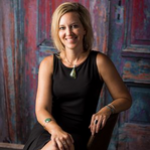Lean Into Wisdom
Books We Love: Thomas Hübl
Thomas Hübl spoke with S&H about overcoming generations of trauma.
“Especially in times of crisis, it is all about giving.” So offered Thomas Hübl in a teaching session at the outset of the pandemic. Hübl has earned a following by addressing trauma in innovative ways; he describes his work as “centered on personal and transpersonal healing and integration.”
Fundamental to his teachings is his belief that “trauma creates a profound sense of scarcity, and all human crises are in some way based in trauma.”
“Especially in times of crisis, we are called to generously care for and attend to life, to give more, to support those in need,” he says. On the heels of his new book, Healing Collective Trauma, S&H caught up with Hübl to discuss his recommendations for how to heal in the here and now.
What practices do you suggest for the current moment?
Thomas: As a contemporary mystic, I practice and teach engaged contemplative (individual) and relational (interpersonal) practices that work in and with the contemporary world, such as presencing, inner-body awareness, embodiment, and relational intelligence. Each of us is both an “I” and a “We”; we are individuals, families, communities, and cultural citizens.
We can practice during the most mundane or even the busiest moments of our lives; nothing is not spiritual. At the heart of our work is the practice of listening to the Divine or higher organizing principle of life, to be able to bow and receive the light of the future.
How can our global citizenship and shared cultural wounds serve to reawaken us and help us relate to each other?
The underlying consequence of trauma—whether in individuals, families, communities, or societies—is that it damages our innate human capacity to form and sustain healthy relationships. We say trauma breaks relation. By supporting one another through times of difficulty, we can prevent traumatization.
And by directly addressing our communal and historical wounds together, we can actively repair the essential disruption trauma has created. When we create practices that activate group coherence and mutual presencing, we not only heal, we energize our collective nervous system toward higher resilience and evolutionary unfolding.
The idea of intergenerational and cultural wounds is very timely. How can we heal as a culture?
It is vital that we restore our relational fabric by deeply listening to one another and acknowledging the wounds of the past. This requires more than intellectual awareness—it necessitates that we also feel. Any unhealed past is not really past; it will continually be repeated until it can be processed and integrated.
What does an integrated world look like and how do we get there?
Every time trauma is healed, we restore a part of our past and make possible a brighter future for ourselves and succeeding generations. We transform separation, othering, and scarcity into relation, interdependence, and abundance.
I believe evolution itself is calling us to the cusp of a new era … perhaps the one described beautifully by cultural historian Richard Tarnas as “at once unitive and pluralistic, emancipatory and relational, socially engaged and spiritually informed, embodied and ensouled.”
You have developed a tool you call the Collective Trauma Integration Process (CTIP).
The Collective Trauma Integration Process emerged over the last 18 years of my work with large groups.
At heart, CTIP is a mutual practice of group coherence, shared presencing, and collective healing. The steps for its facilitation are outlined in the book for healers, therapists, and facilitators as a powerful methodology for assisting communities plagued by the consequences of cultural, historical, and transgenerational suffering. It shouldn’t be attempted by inexperienced group facilitators. Unintegrated history is past; integrated history is presence.
What wisdom can you leave us with?
Simply this: Every difficulty we face is a signpost to a deeper teaching life has yet to show us. Life is a profound and startling miracle—both in its beauty and its trials.
When we awaken our inner curiosity and passion for inquiry, we become life’s deepest devotees, its most ardent students. This offers us the power to bring light and awareness not only to our own lives, but to bear it as a seed of healing into the world.


